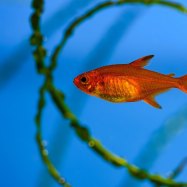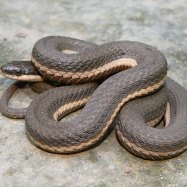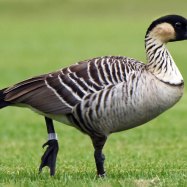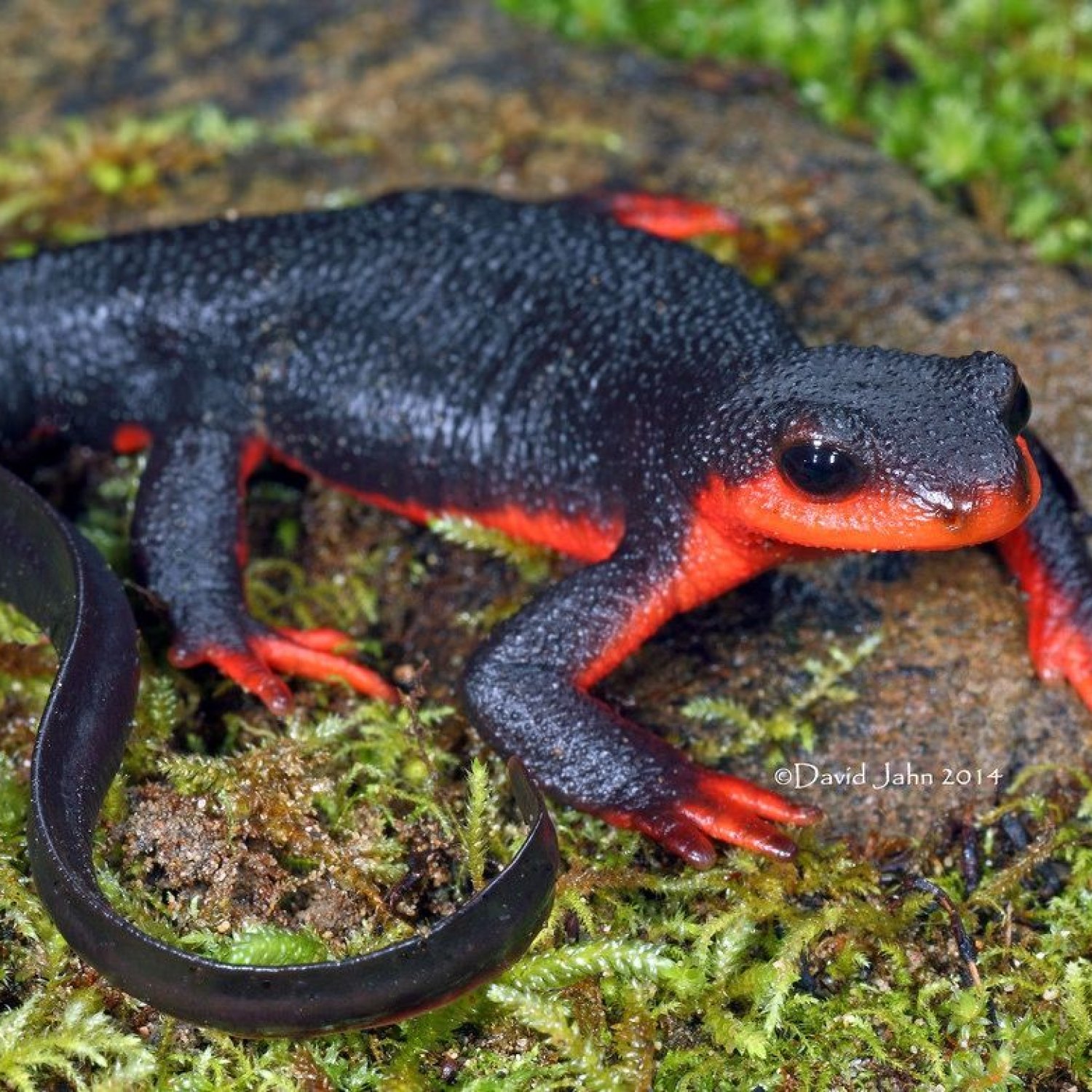
Newt
8-12 cm (3-4.7 inches)
The newt, a small amphibian found in various habitats in Europe, belongs to the Salamandridae family. With a slender body, long tail, and smooth skin, they measure 8-12 cm (3-4.7 inches) in length. These cute creatures are excellent swimmers and feed on insects, making them a vital part of the ecosystem. #AnimalsofEurope #Newt #Salamanders
Animal Details Summary:
Common Name: Common Newt
Kingdom: Animalia
Habitat: Freshwater habitats such as ponds, lakes, and slow-flowing streams
The Fascinating World of the Common Newt
Have you ever heard of a creature that can regenerate a lost limb or even its entire heart? Such an incredible ability sounds like something out of a science fiction movie, but for the common newt, it's just another day in the life. This small amphibian, found in various habitats across Europe, has captured the curiosity and attention of scientists and animal lovers alike. From its unique physical characteristics to its impressive survival skills, the common newt is truly a fascinating creature worth learning about.The Basics: Scientific Name and Classification
The common newt, scientifically known as Lissotriton vulgaris, belongs to the Kingdom Animalia, Phylum Chordata, and Class Amphibia Newt. It is a member of the Caudata order and the Salamandridae family. This classification places the common newt alongside other well-known amphibians such as salamanders and toads.Where Can You Find the Common Newt?
The common newt's habitat ranges across Europe, including countries such as the United Kingdom, France, Germany, and beyond. These amphibians prefer freshwater habitats, specifically ponds, lakes, and slow-flowing streams. However, you can also find them in forests, gardens, and even near human-made structures like wells and ditches.A Diverse Diet: What Do Common Newts Eat?
One of the most intriguing aspects of the common newt is its carnivorous feeding method. These amphibians have a varied diet, consisting of invertebrates, small fish, and tadpoles. As they are active hunters, common newts will use their agile bodies to catch prey, and their sharp teeth help them to break down their food.Colorful Camouflage: Body Coloration of Common Newts
The common newt may have "common" in its name, but its coloration is anything but ordinary Night Adder. This amphibian's body color varies depending on its subspecies, with shades of brown, olive green, black, or gray dominating its exterior. However, the real showstopper is its strikingly bright belly, with colors ranging from bright orange to red, and even neon yellow. This vibrant coloration serves as a method of camouflage against predators, as it can blend in with the surrounding aquatic vegetation.Distinct Physical Traits: Body Shape and Size
The common newt is relatively small, measuring only 8-12 cm (3-4.7 inches) in length. However, what they lack in size, they make up for in unique physical characteristics. Their body shape is slender, with a long tail and short limbs. This design allows for fast and efficient movement in the water, making them expert swimmers. The common newt's skin is also smooth, making it appear almost slimy to the touch.A Marvelous Adaptation: Regeneration and Self-Defense
As mentioned earlier, one of the most remarkable abilities of the common newt is its ability to regenerate. If a limb is lost due to an attack or injury, the newt can grow it back within a few months. More impressively, if the newt loses its heart, it can also regenerate a new one. This remarkable ability has captured the attention of scientists, who are studying the newt's genetic makeup to understand how this process works.Another unique way that the common newt has adapted to survive is through its self-defense mechanisms. Like most amphibians, common newts produce toxins to deter predators, with the most potent toxins found in its skin. If threatened, the newt can release these toxins, making its predators think twice before attempting further attacks. Additionally, they can also shed their tail if caught, making a quick getaway while their attacker is busy trying to eat the tail.
The Life Cycle of a Common Newt
The common newt follows a distinct life cycle, beginning as an egg, then turning into a larvae, before finally becoming an adult. The female newt lays its eggs on leaves or plants near the edge of the water, where they will be safe from predators. After a few weeks, the eggs hatch, and the tiny larvae emerge. These larvae have feathery gills and spend most of their time feeding on small aquatic insects and other invertebrates.As the larvae continue to grow and develop, they will eventually go through a metamorphosis, shedding their gills and developing legs and a more defined body. This process usually takes a few months, and once complete, the newt will leave the water to live a more terrestrial life. Adult newts are known to live for an average of 12 to 15 years if living in ideal conditions.
In Conclusion
The common newt, with its unique physical characteristics, diverse diet, and remarkable survival skills, is truly a remarkable creature. Despite its small size, it has captured the attention of scientists, and its abilities inspire fascination and awe. Its presence in various habitats across Europe is an essential part of our ecosystem, and it's a species that needs to be protected and preserved for future generations to marvel at. If you ever come across a common newt in its natural habitat, take a moment to appreciate its beauty and the wonder of the natural world.

Newt
Animal Details Newt - Scientific Name: Lissotriton vulgaris
- Category: Animals N
- Scientific Name: Lissotriton vulgaris
- Common Name: Common Newt
- Kingdom: Animalia
- Phylum: Chordata
- Class: Amphibia
- Order: Caudata
- Family: Salamandridae
- Habitat: Freshwater habitats such as ponds, lakes, and slow-flowing streams
- Feeding Method: Carnivorous
- Geographical Distribution: Europe and parts of Western Asia
- Country of Origin: Various countries in Europe
- Location: Various habitats in Europe
- Animal Coloration: Varies depending on subspecies, range from brown, olive green, black or gray with brightly-colored bellies
- Body Shape: Slender with a long tail, short limbs, and smooth skin
- Length: 8-12 cm (3-4.7 inches)
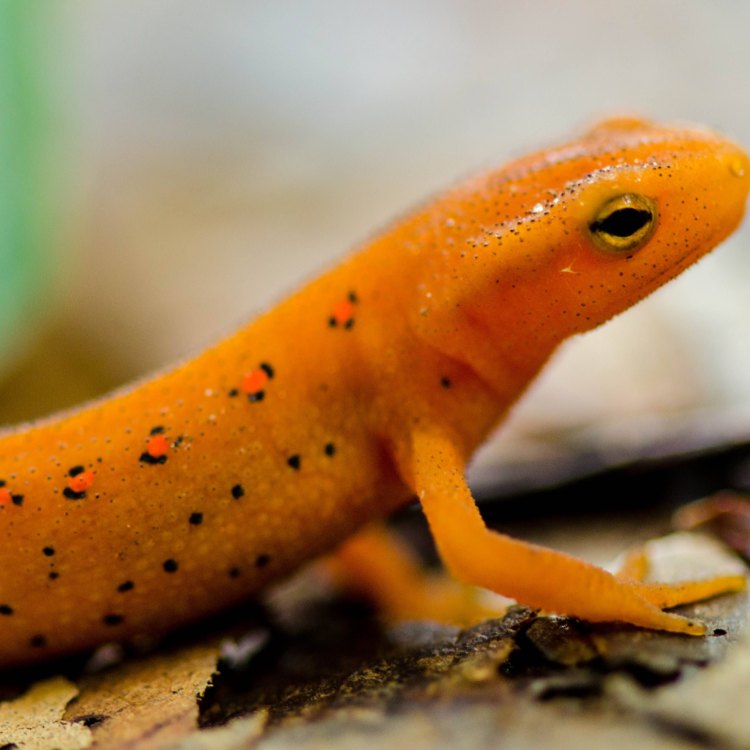
Common Newt
- Adult Size: 10-14 cm (3.9-5.5 inches)
- Average Lifespan: 5-15 years
- Reproduction: Sexual
- Reproductive Behavior: Males perform courtship displays to attract females
- Sound or Call: Males produce low-frequency calls during breeding season
- Migration Pattern: Non-migratory, but may move short distances to find suitable breeding habitats
- Social Groups: Solitary, except during breeding season
- Behavior: Nocturnal and mainly terrestrial, but also swim well
- Threats: Habitat loss, pollution, climate change
- Conservation Status: Least Concern
- Impact on Ecosystem: Predator control and prey regulation
- Human Use: Kept as pets, used for scientific research and educational purposes
- Distinctive Features: Warty skin, bright belly coloration, regenerated limbs
- Interesting Facts: They can regenerate lost limbs and tails
- Predator: Large birds, fish, snakes, and other amphibians
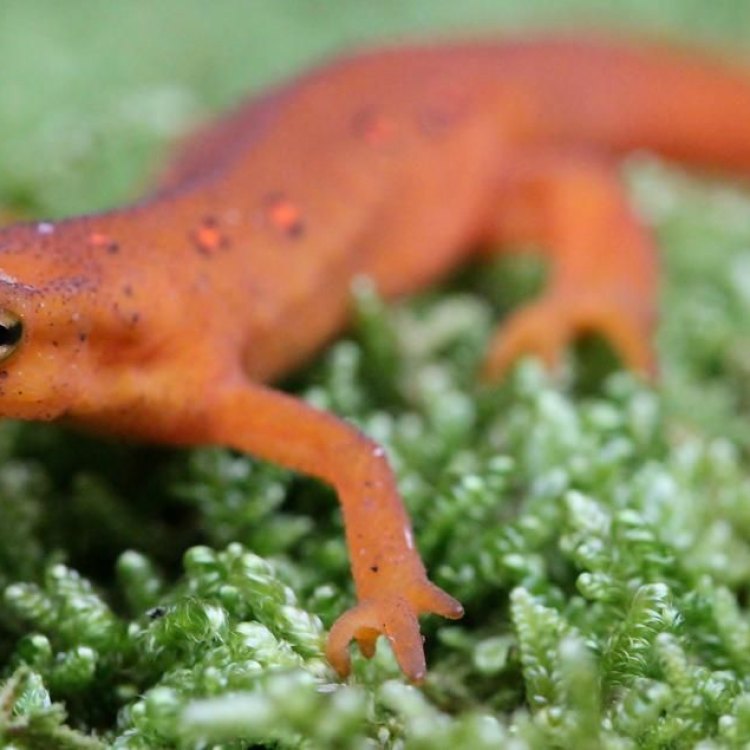
Lissotriton vulgaris
The Fascinating World of Newts: Survivors of Time and Adversity
Deep in the forest, among the fallen leaves and decaying logs, lives a creature that has defied the test of time. The newt, with its distinct warty appearance and bright belly coloration, has been roaming the Earth for over 160 million years. These amphibian creatures have managed to survive and adapt through different eras, facing changes in the environment, predators, and even human impact.Wondering what makes the newt so unique and intriguing? Let's dive into the depths of their world and discover what sets them apart from other creatures PeaceOfAnimals.Com.
Appearance and Behavior
Newts are relatively small animals, with adults reaching sizes between 10-14 cm (3.9-5.5 inches). They have smooth, moist skin with a bumpy, warty texture, giving them a distinct appearance. Their coloration can vary from brown, green, orange, to even red, making them well-camouflaged in their natural habitat.These creatures are mainly nocturnal, which means they are most active at night. They are also terrestrial, meaning they spend most of their time on land. However, what's interesting about newts is they are also excellent swimmers, using their webbed feet to glide gracefully through the water. This unique adaptation allows them to explore their surroundings and escape from predators Nubian Goat.
One of the most distinctive features of newts is their ability to regenerate lost limbs and tails. If they encounter a predator, they can detach their tails to distract the attacker, giving them a chance to escape. The lost limbs or tail will then gradually regenerate within a few months, a remarkable survival technique that has been perfected over millions of years.
Reproduction and Courtship
Newts have a complex reproductive behavior, with males performing elaborate courtship displays to attract females. During the breeding season, which typically occurs in the spring, male newts will swim to shallow waters and perform a series of rituals to impress the females. These rituals can include head bobbing, tail waving, and even foot tapping to display their fitness and attractiveness.But what sets newts apart from other amphibians is their ability to communicate through low-frequency calls. These calls are produced by male newts to attract females and establish their dominance over other males. The sound travels better in water, making it an effective method of communication for these aquatic creatures.
Once a male successfully attracts a female, they will perform a mating dance, and the female will lay her eggs on leaves or submerged plants. The eggs will hatch into larvae, which will then develop into tadpoles before metamorphosing into adult newts.
Migration and Social Behavior
Newts are generally non-migratory, meaning they do not move long distances in search of food or suitable habitats. However, they may migrate short distances during the breeding season to find breeding sites or suitable environments. These migrations are essential for the survival of newt populations, ensuring genetic diversity and preventing inbreeding.When it comes to social behavior, newts are mostly solitary animals, except during the breeding season. During this time, they will gather in large numbers in shallow waters, creating a temporary community. This social behavior is crucial for finding and attracting mates, ensuring the survival of their species.
Threats and Conservation
Like many other species, newts face several threats that endanger their survival. Habitat loss due to urbanization, pollution, and climate change are the most significant threats to newt populations. These amphibians are dependent on clean, freshwater habitats for breeding and foraging, making them highly vulnerable to water pollution and habitat destruction.Thankfully, due to their widespread geographic distribution and adaptability, most newt species are classified as "Least Concern" on the IUCN Red List of Threatened Species. However, more attention must be given to protect their habitats from further degradation, as any impact on newt populations can have severe consequences on the overall ecosystem.
The Importance of Newts in the Ecosystem
Newts play a significant role in maintaining a healthy ecosystem. They are considered "indicator species," meaning their presence or absence can indicate the health of an ecosystem. As predators, newts feed on insects, worms, and other invertebrates, helping to control their populations. This, in turn, helps to regulate the populations of their prey, maintaining a balance in the ecosystem.Moreover, newts are also vital in controlling the spread of diseases among amphibians. As they can regenerate lost limbs, they also have a unique ability to regenerate damaged immune tissues, making them immune to certain diseases. This unique adaptation has been studied by scientists to develop potential treatments for human diseases.
Newts and Human Use
Newts have been a part of human history and culture for centuries. In some countries, newts were considered magical creatures, believed to have the power to heal diseases and grant wishes. In folklore, they were also associated with witchcraft and sorcery.In modern times, newts are often kept as pets due to their unique appearance and low maintenance. However, before considering keeping a newt as a pet, it's essential to understand the laws and regulations regarding keeping wild animals in captivity. In some countries, it is illegal to keep newts as pets, while others require permits and licenses.
Apart from being kept as pets, newts are also used for scientific research and educational purposes. They have helped scientists gain a better understanding of amphibian evolution, behavior, and regeneration abilities. They are also often used in educational programs to teach children about the importance of biodiversity and conservation.
In Conclusion
The world of newts is a fascinating one, full of unique adaptations, survival techniques, and behavior. These ancient creatures have managed to survive through multiple changes on Earth, proving their resilience and adaptability. However, as humans continue to impact the environment and biodiversity, it is crucial to protect and conserve these incredible creatures and their habitats.From their courtship rituals to their ability to regenerate lost limbs, newts have managed to captivate our imagination. As we continue to learn more about them, we realize that their survival is interconnected with the health of our planet, making them an essential part of our ecosystem. So the next time you come across a newt, take a moment to appreciate their beauty and resilience, a testament to the wonders of the natural world.
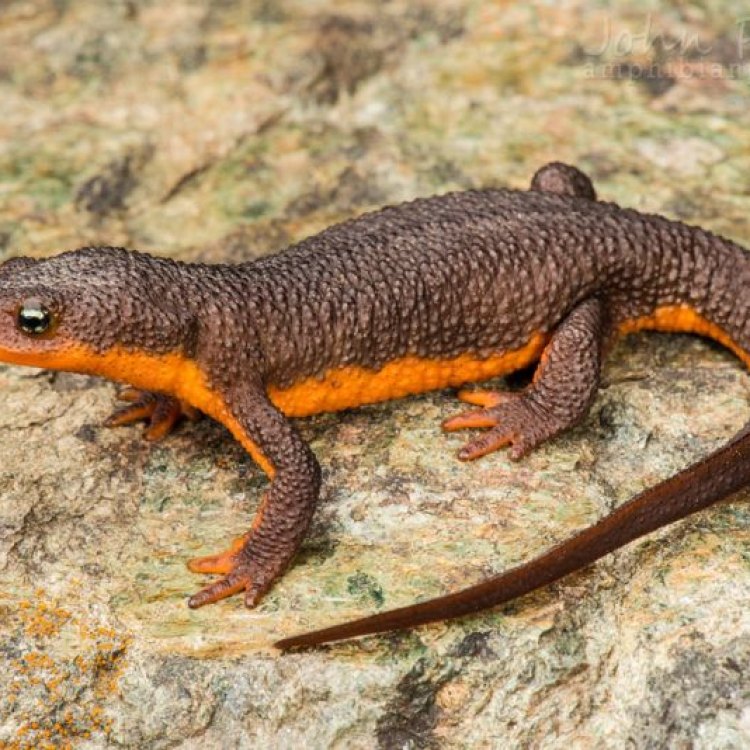
The Fascinating World of the Common Newt
Disclaimer: The content provided is for informational purposes only. We cannot guarantee the accuracy of the information on this page 100%. All information provided here may change without prior notice.




